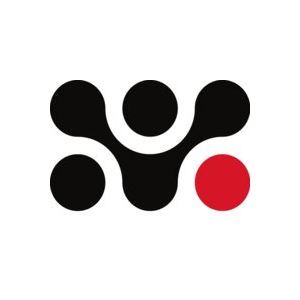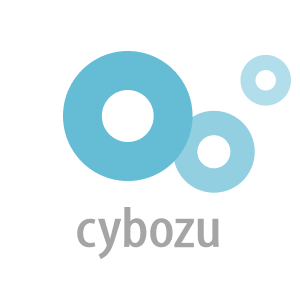Updated July 1, 2023
Teamwork in Japan: Tips for Working with Others
Unless you’re working solely by yourself, you’re bound to interact with other people as you work.
As businesses are structured in a way that utilizes each worker individually, each person has specific roles, making up a small part of the bigger picture. However, this structure is primarily based on two key concepts, which are communication and collaboration.
After all, they don’t say, “Teamwork makes the dream work” for nothing. In fact, it wouldn’t be too out there to say that businesses would literally collapse without proper teamwork. Imagine no one collaborating and going about their day, minding their own business. Without good communication, things would eventually go awry, and business would have to come to a halt.
This is why team building practices and the concept of teamwork have to exist in some shape or form everywhere businesses want to thrive. In Japan’s case, even if the culture of teamwork and team-building isn’t directly emphasized as much, the country has still adopted a form of team-building culture in its own way, and that’s what I’m here to talk about today.
In this post, I’ll explain the concept of teamwork and the team-building practices that exist in Japan. I’ll also explain how both traditional and modern Japanese workplaces handle teamwork, compare the two, and tell you about some common team-building activities you might come across in Japan.
Let’s start by briefly unraveling the concept of teamwork in Japan.
In this article: 📝
What Does “Teamwork” Mean in a Workplace?
Before we can talk about teamwork in Japan, we first need to talk about what teamwork means in the context of a workplace and why it’s important in general.
In the broadest terms possible, when talking about teamwork in a work environment, what people actually mean can be described simply as having open and clear communication channels among co-workers and being considerate of your co-worker’s time and effort.
As long as there’s clear communication and everyone respects one another’s duties and tasks, teamwork comes naturally. At the end of the day, teamwork in a workplace is all about a group of people working in harmony.
So, from this point of view, understanding why teamwork is so important in a workplace isn’t really hard. Doing a job together with a team rather than by yourself becomes much easier when there’s a group of people who you can communicate with easily and collaborate effortlessly. It empowers people in a way that wouldn’t be possible if they worked alone.
In fact, research even tells us that problem-solving yields much better results when done as a team. What’s more, as people have a much easier time making decisions collectively, effective teamwork also boosts productivity. The sense of security of being a part of a team even leads to people being happier with their jobs.
This sense of security your team provides also leads to being able to take calculated risks more often and with more accurate results, as you have more than just your own mind to trust. So, all things considered, the fact that a group of three or four can outperform most individuals isn’t so surprising.
Now that we have a clear understanding of what teamwork means in a work context, let’s now see how this term translates to the Japanese workplace.
Unraveling the Concept of Teamwork in Japan
If you were to describe the Japanese work culture with a few words, there’s no doubt that “teamwork” would make the cut.
This sentiment is especially true for Japanese companies that are more on the traditional side, but nonetheless, it’s safe to say that teamwork is embedded into the Japanese work culture.
I mentioned this briefly in my post about mastering basic greetings in Japanese, but at a traditional Japanese office, employees often have a sort of camaraderie, where each employee has to be respectful of their co-workers and their workload.
For instance, when an employee leaves the office while others are still working, it’s quite common to apologize to them for leaving. This isn’t an extreme gesture that’s only done by the nicest people, either. It’s just how employees say goodbye to one another.
Similarly, one of the most common phrases you’ll hear at a Japanese workplace is otsukaresama desu (お疲れ様です), which means “thank you for your hard work.” While the phrase sounds specific, it’s actually a way to say hello to your co-workers. Paints a picture, doesn’t it?
As you can see, both teamwork and team building in Japan are things that are deeply embedded into the culture, even though it may not look like it when compared to the Western countries’ idea of team building.
Japanese people simply look at teamwork as a part of the day-to-day culture rather than treating it as a muscle that needs to be worked out by doing dedicated activities or exercises, which is what the Western idea of team building is like, as I’ll later get to in this article.
Teamwork in Japan: Traditional and Modern Japanese Team-Building Activities

As you might have guessed by now, team-building isn’t a concept that’s local to Japan. You can even tell by looking at what the Japanese term for team building is, which is pronounced as “chiimu-birudingu.”
However, all of this isn’t to say that Japanese companies don’t have team-building practices of their own.
While Japan definitely does have dedicated team-building activities at the workplace, to an outsider, it may be hard to tell what these team-building practices exactly are. In fact, many social activities that are organized by companies are actually about getting to know your co-workers and forming closer bonds with them, but this may look like a mere cultural imposition.
Indeed, the Japanese have many team-building activities of their own, and I’ll explain the most prominent ones briefly here so that you’ll be prepared if you ever need to attend any of these activities in the future.
Hanami
Hanami is a classic Japanese workplace activity that’s organized around the time cherry trees blossom because it’s an outdoor picnic-like get-together that’s meant for enjoying the cherry blossom (sakura) season.
The word hanami (花見) literally means “flower viewing,” and the activity itself isn’t exclusive to the workplace. It’s a traditional activity enjoyed by many, so numerous traditional workplaces organize it\.
In reality, however, hanami parties can be more stressful than one would think, especially for lower-level employees.
As traditional Japanese companies have a hierarchical system, even at social gatherings, employees of the lowest rank are usually tasked to reserve a spot for the hanami, which can mean getting there as early as 6 a.m. The aim, of course, is to find a pretty spot that’s covered in sakura.
Another reason why hanami parties can be stressful for lower-level employees is that they need to serve drinks to the people in higher-up positions. I talked about this in my post about black companies, but if your company is one of those, you’ll probably have to do a lot more than just serving, as you may be ordered around like a busboy.
So, parties like these are actually a good way to gauge whether the company you work at can be considered a black company or not, in addition to providing you with the opportunity to socialize and get to know your co-workers.
Bonenkai
Bonenkai (忘年会) literally means “forget the year party,” and just like hanami, it’s a traditional party concept that isn’t exclusive to the workplace, but it’s mostly organized by companies and businesses. So, if you work at a traditional Japanese company, you’re very likely to be invited to a bonenkai at the end of the year.
Even though it’s about the sentiment of forgetting the past year and focusing on the new one, bonenkai is actually a team-building practice that aims to provide quality bonding time among company employees.
A bonenkai usually features an all-you-can-eat and drink theme, but it’s interesting to note that drinking is the more important part of this event.
As I explained in my post on Japanese work culture, where I talked about Nomikai, the traditional after-work drinking parties, you need to be mindful of pouring the drinks for the higher-ups as a lower-level employee. You also shouldn’t pour your own drinks and let others do it for you instead, which is considered polite in Japanese culture.
As the theme is to settling issues of the past year in a “water under the bridge” manner, a bonenkai is essentially a great team-building practice because it allows employees to loosen up and vent about things that might be improved at the office, which is healthy, as it prevents a buildup of resentment and frustration.
At these events, with the help of alcohol and the open encouragement of managers/employers, employees can talk about work more openly, which is something you don’t come across often in Japan. This is all the rarer in general settings, as honne and tatemae, the culture of concealing your true feelings to preserve societal harmony, is a big part of Japanese culture.

Shinnenkai
Shinnenkai (新年会) is often mentioned alongside bonenkai because the two events are held very close to each other. However, while bonenkai parties are all about acknowledging the fact that the current year has come to an end, shinnenkai is more about the future, as it’s about welcoming the new year.
Another thing that sets shinnenkai apart from bonenkai is that it might have a more formal tone. While bonenkai parties have lots of alcohol and silly entertainment, shinenkai parties tend to be more introspective and calm (although every company is different).
Usually, a shinnenkai is slightly more structured. Since it’s forward-looking, there will likely be senior staff making speeches about the future.
Of course, drinking is still a big part of shinnenkai parties (it’s still a Japanese workplace party after all). In fact, the most common places to have shinnenkai are izakayas, which are traditional Japanese bars & restaurants.
Despite the slightly more formal tone, managers and bosses still allow employees to set formalities aside for the night, which helps superiors and subordinates to converse like equals, helping to form better bonds while letting employees blow off some steam.
Shain-Ryoko
Another common team-building exercise that’s still used by traditional Japanese companies is a workplace trip called shain-ryoko (社員旅行).
While shain-ryoko might not be as popular as it once was, if you happen to work at a traditional company, you might very well be invited to one. In the simplest terms, a shain-ryoko is a work trip, but the purpose isn’t to work — it’s to have a vacation with your colleagues.
You can think of it simply as a work retreat. The aim of a shain-ryoko is for employees to get to know each other better and hopefully create new bonds. However, this isn’t your standard leadership retreat.
Usually, there are no work-related activities planned for a shain-ryoko, and leisurely activities and meals that involve lots of drinking take precedence.
Traditionally, a common spot for a shain-ryoko is a ryokan, which is a traditional Japanese hotel where you can see the signature Japanese personality demonstrated at its best (as I explained in my post on tipping in Japan).
However, companies don’t always plan an overnight trip — you’ll also come across shain-ryoko, which are one-day company trips. When this is the case, it’s quite common to do shain-ryoko at a local sightseeing place where employees can eat and drink and spend the day socializing.
The main function of a shain-ryoko as a team-building activity is taking the employees, managers, and bosses out of the office and placing them in a social environment where people can relax without having to worry about ranks, meetings, and other work-related stressors.
While employees may feel forced to attend these trips, and it may not always be as fun as it sounds, it’s still a team-building effort that’s historically been a part of the Japanese work culture.
Japanese and Western Team Building: Different or Similar?
As you can see, while team building in traditional Japanese companies is done day-to-day or periodically in the form of employee lunches or parties and trips, the Western approach to team building is a little bit different.
This is largely because these two workplaces have vastly different practices. First of all, seniority and promotions at modern companies are based mainly on merit rather than seniority.
Also, while it’s normal to work late hours, and employees usually stay at the office until the manager leaves at traditional Japanese offices, this is hardly the case for more modern, Western-style companies in Japan. This is because these companies believe that autonomy and flexibility are better motivators.
Last but not least, another difference between modern and traditional Japanese workplaces is that modern ones are usually much less formal and have a laid-back environment. It isn’t so much about looking a certain way but more about understanding the company’s principles and getting the job done.
So, as all of these differences point in the direction of individuality rather than feeling like part of a team, it’s only natural that the idea of team building is vastly different between a traditional Japanese workplace and a modern one.
In a traditional Japanese workplace, team building is incorporated into the workplace structure and the day-to-day schedule. By having employees lunch together frequently, by having them attend annual or weekly events, and by going out to drink after work — in a sense — the Japanese workplace is always keeping the team together.
So, due to this, from the perspective of a modern workplace, team building becomes something that needs to be added to the equation after the fact, while from a traditional Japanese point-of-view, the existence of a “team-building exercise” simply implies that there’s a problem that needs to be worked on or that something was lacking.
All that being said, while there’s nothing wrong with comparing the traditional Japanese approach to the “Western approach”, I should also note that there’s a distinction between traditional Japanese companies and modern Japanese companies as well. Let’s take a closer look at a handy Japanese principle that you’re likely to come across at a modern Japanese workplace.
The Japanese Principle of “Koumeiseidai”
When talking about teamwork in Japan, it’s impossible not to bring up the principle of koumeiseidai (公明正大).
In the most literal sense, we can simply look at the four different characters that make up the word “koumeiseidai” to interpret it properly. These characters are public (公), clear (明), honest (正), and large (大).
At its core, the main messaging of the koumeiseidai principle is very simple as long as you understand the three main factors that affect motivation and where these factors meet. In the simplest terms, these factors can be described as what someone “wants” to do, what they “can” do, and what they “have to” do.
However, as the traditional approach to team-building is closely associated with trusting your teammates more than anything, this puts too much emphasis on what people “have to do.”
This is simply because this unconditional trust within a team causes pressure on all of the members, as they end up compromising on the things they “want” to do and what they “can” do in the name of not letting their teammates down.
This is why, as an approach to team-building, the koumeiseidai principle instead supports members to express their ideas publicly, clearly, according to their honest feelings, and loudly.
Open Communication Is Key
It might be hard to connect this concept to teamwork at first glance, but it’s actually quite simple.
The idea here is that the members of a team will work much more harmoniously and efficiently if there’s clear communication where everyone can say what they mean without sugarcoating it.
This is all considering, of course, that the first criterion of being an effective team is already met, which is having a common goal as a team.
So, with an open line of communication, each member of a team can openly discuss what they want to do and are willing to do while also being able to openly discuss what has to be done. So, the principle of koumeiseidai essentially allows teams to keep their motivation in check at all times.
So, while one might think that teamwork and team building aren’t as emphasized in Japan, especially considering the somewhat brutal work culture at traditional Japanese companies, the koumeiseidai principle is perhaps the greatest testament to the presence of a well-thought-out team-building culture in Japan in modern companies.
For instance, Cybozu, a Japanese company that creates collaboration software for teams, is a great example of a “modern” Japanese company and a vocal subscriber of this principle. You can read about the concept and how Cybozu utilizes it in diverse teams in this article written by the company’s Executive Vice President.

Tips for Foreigners: How to Adapt and Excel in Japanese Teams
Even though you might have understood the differences between Western and Japanese team building, you may still struggle to adapt to a Japanese workplace as a foreigner. After all, if you’re in a predominantly Japanese team, your co-workers will already be used to the way teamwork is handled in Japan, whereas you may feel the absence of the more familiar team-building exercises of the Western workplace culture.
With that in mind, here are some of my tips to help you better integrate and excel in Japanese teams.
First and foremost, it’s always good to remind yourself of cultural differences and realize that there are multiple ways of doing things. Even if you genuinely believe otherwise, if you keep an open mind, you may be surprised to see that this isn’t always the case, which will lead to your improvement as a person.
Another tip I can give you here is to be always open to honest, clear, and effective communication.
You may be subconsciously drawn to the idea of doing things your way because you’re getting the job done anyway, but remember the koumeiseidai principle and that you’re in an environment where open, loud, and clear communication is needed from all parties to keep the motivation of the group going. Try to talk to your colleagues or team members and be open to finding a middle ground.
Lastly, another important tip for being part of a team — not just in a Japanese workplace but anywhere — is to try and strike a balance between your individual initiatives and the collective responsibility of the group.
Remember: causing someone to do more work or inconveniencing people, in general, is quite frowned upon in Japanese culture. So, always being mindful of your responsibilities and knowing what your contribution is are good ways to keep yourself on the right track.
Conclusion: The Future of Teamwork and Team Building in Japan
As you can see, Japan traditionally has had a unique approach to teamwork and team building, which is quite different from the modern approach to team building that those who are from the U.S. or Europe are more familiar with.
As I explained, Japan simply sees team building as a day-to-day activity. In traditional Japanese companies, teamwork and team building are constantly strengthened by having regular events and get-togethers. It’s also quite common for colleagues to have lunch together so that they can feel like a part of a larger group and have a sense of belonging.
As opposed to this, the Western approach to team-building is something we’re seeing more of with modern companies in Japan, especially the ones that operate in tech and the companies we feature on the Japan Dev company list.
This approach is based on strengthening collaboration through dedicated exercises and by emphasizing teamwork at every step of the way.
However, while this distinction has been the case for quite some time, things have been changing, especially in the past couple of decades as the impact of globalization is becoming more prominent.
With a population that’s mostly Japanese and not many foreigners living in Japan, the country has been historically a homogenous country.
However, as the country keeps gaining popularity as a common destination for foreign professionals, this homogeneity is leaving its place to a more multi-national population, especially in Japan’s big cities, where most foreign professionals move to.
The Rise of Cross-Cultural Teams and International Collaboration
Thanks to this movement of people coming to Japan to work and live, teams at Japanese companies are becoming much more diverse, and cross-cultural teams are much more common nowadays. This is why the future of teamwork in Japan seems to be headed in the direction of the West as we see more Westernized team-building practices in modern companies.
What’s more, another factor that has a significant effect on the future of teamwork is the rise of remote work, as I mentioned in my post about remote work in Japan. Now that there are many companies out there hiring not just from Japan but from anywhere in the world, there’s an emphasis on international collaboration like never before.
As companies become more diverse, with some people even attending meetings from overseas, continuing the Japanese approach to team building alone isn’t enough. After all, it’s very hard to achieve that strong sense of togetherness that employee lunches and parties together can provide in such an environment, especially when some people aren’t even working from the office.
In the same vein, as things are rapidly changing, there’s no guarantee that the Western approach to team building will be effective on the diverse teams of the future, either.
So, in a sense, we can conclude that globalization and international collaboration aren’t just forcing companies to abandon the traditional ways and adopt more “Western” approaches but to come up with new ways for team building and achieving more effective teamwork as the landscape of employment and workforce is evolving continuously.
While this is it for this post, you can learn more about employment in Japan by reading my posts on the flex time system in Japan and full-time employment.
Get Job Alerts
Sign up for our newsletter to get hand-picked tech jobs in Japan – straight to your inbox.








